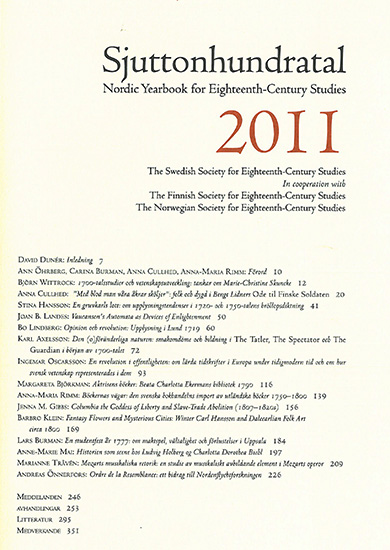Columbia the Goddess of Liberty and Slave-Trade Abolition (1807–1820s)
DOI:
https://doi.org/10.7557/4.2391Keywords:
Columbia, the body politic, natural rights, liberty, American RevolutionAbstract
Eighteenth-century American thespians, balladeers, and artists used performances of Columbia, an anthropomorphic metaphor for the body politic, to animate Enlightenment precepts of natural rights and liberty. Following the American Revolution, anti-slavery sympathizers staged Columbia as a symbol both of political liberty from Great Britain and of personal liberty in engravings, plays, and ballads that depicted her bequeathing freedom to Africans from the throne of her Temple. But in reaction to slave-trade abolition-Great Britain's 1807 legislation and the United States' ban in 1808-cultural producers began bifurcating constitutional from personal freedom in their iterations of Columbia. Anti-slavery advocates still used Columbia as an iconic syncretism of political and personal liberty to critique slavery. Others, however, threatened by the possibility of black freedom associated with slave-trade abolition, staged Columbia to represent political but not personal liberty. Thus, just as the slave-trade ban went into effect, Philadelphia's New Theater performed Columbia in dances, songs, and allegorical set pieces that fêted political independence, but in which slaves were absent, an erasure that reinforced whiteness as the defining qualification for American citizenship. Postabolition performances of Columbia in her Temple of Liberty, constructed on rigidifying edifices of racial codification, banished blacks from the civic polity-a far cry from Enlightenment precepts of liberty and rights.









